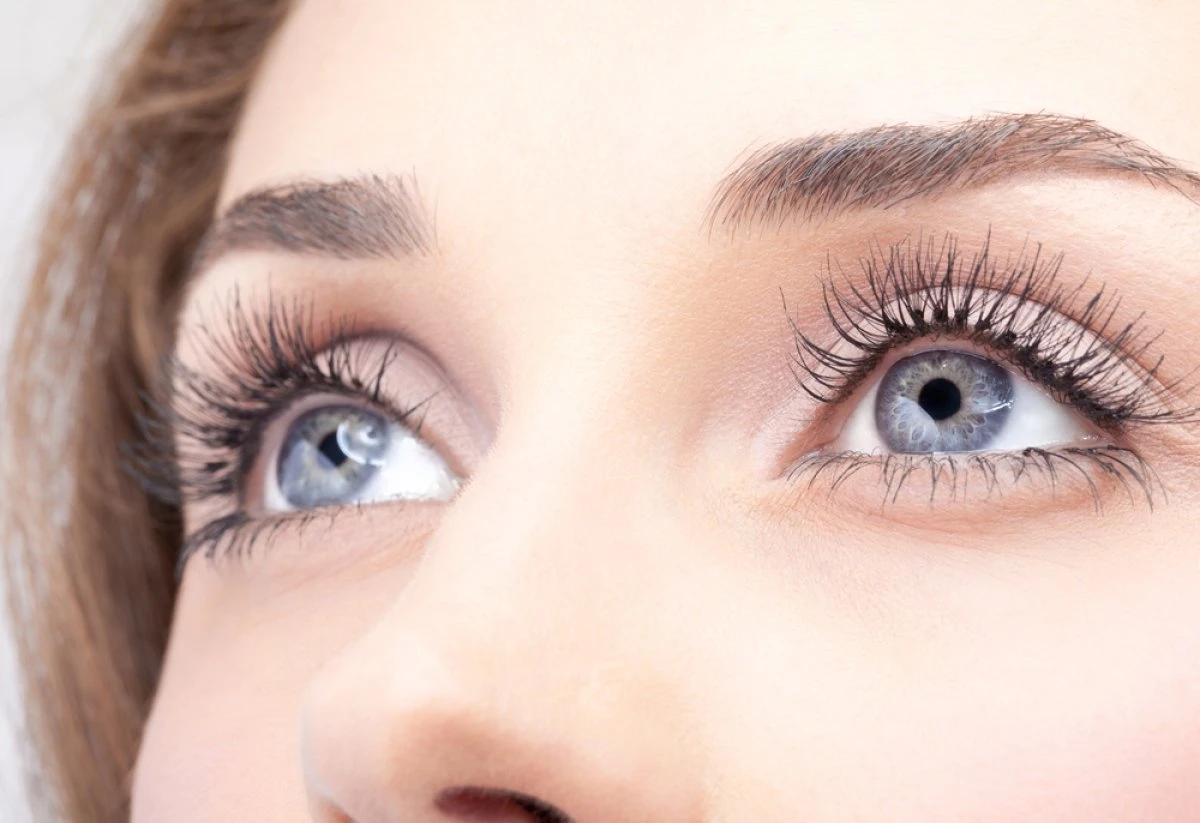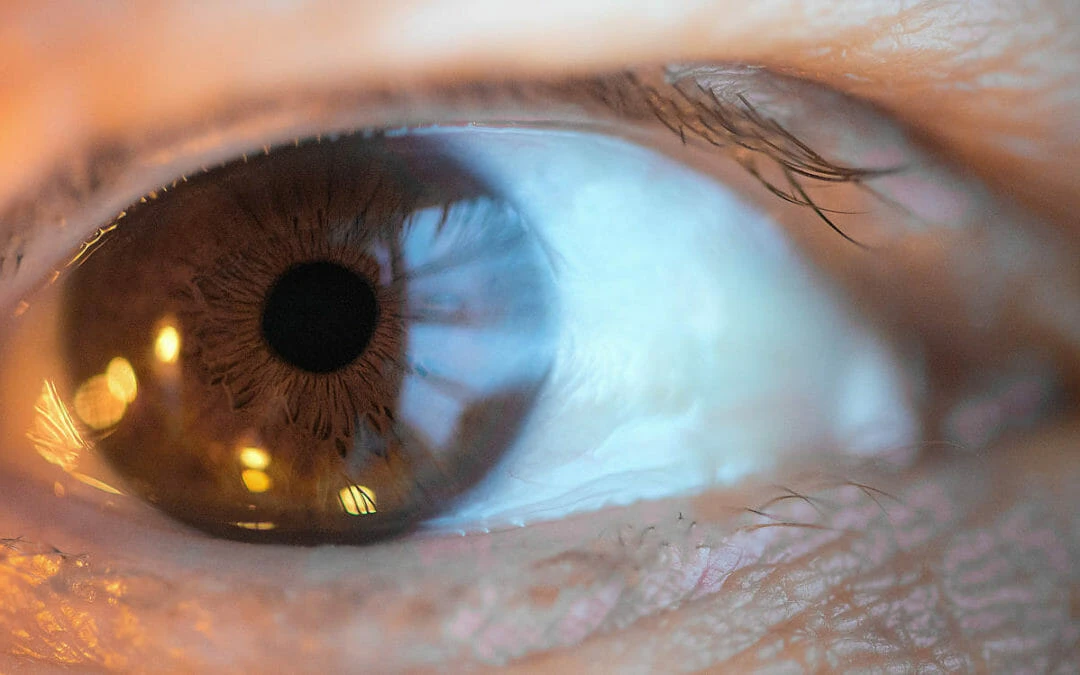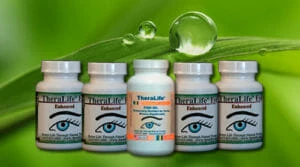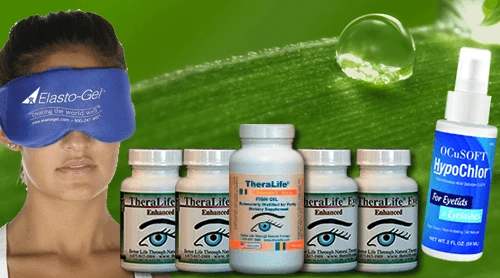All Natural Uveitis Treatment – To Stop Steroids.
One of the biggest challenge in Uveitis is inflammation. Steroids are the most frequently used drug for uvieitis. Unfortunately, the steroid side effects can be devastating. Because uveitis is an eye disease, conventional treatment approaches have been using drops.
However, drops reaches from the surface and have difficulties treating disorders where the cellular functions can not be reached via surface.
TheraLife’s approach to treating eye disorders is oral – treatment internally to balance and revive cellular functions.
TheraLife has proven that this oral approach works well for people with dry eyes, and now also expanded into Uveitis-
Best oral Uveitis Relief that works – Theralife
Reduce inflammation, control Posterior Uveitis with all natural, oral treatment that works.
Add To Cart
How does TheraLife Eye Capsules Work?
What is in TheraLife Eye Capsules?
Customer Success Stories
Uveitis recovery
I don’t know where I would be without Theralife products. When I first contacted Dr. Yang, I had just come out of surgery due to ongoing uveitis flare ups. I was on prednisolone drops, as well as glaucoma drops. My eye was very dry.
After adjusting my diet and taking the theralife products recommended by Dr. Yang my eye has been the best it ever has since my diagnosis. I am currently off the drops, and maintaining my healthy lifestyle. When I stop taking my theralife products I notice my eye getting dry, and irritated, after taking them for a couple days again, my eye feels great. These products work, ani really begin to lubricate your eye from the inside out vs. topical lubricants that end up making your eye worse.
I would recommend these products to anyone struggling with uveitis, or dry eyes.
LW, United States
Introduction
Posterior uveitis, an inflammation of the eye’s middle layer, has potential severe implications for ocular health. This article explores the various treatments of this condition, focusing on scientific applications and case studies, with references illustrating the benefits of these treatments.
Research and clinical studies (referenced below) have shown the efficacy of treatments such as corticosteroids, immunosuppressive drugs, and biologics in managing uveitis. The article delves into these therapeutic approaches, providing a comprehensive analysis of their mode of action, application, and effectiveness, based on well-documented case studies and scientific research.
The aim is to provide readers with an understanding of the scientific advancements in uveitis treatment, enabling them to make informed decisions about managing this condition. The article also underscores the importance of early diagnosis and intervention in achieving successful treatment outcomes.
References:
- ScienceDirect – Uveitis Treatment: From Corticosteroids to Biologics
- MDPI – Current Approaches and Future Directions in Uveitis Treatment
- Google Books – Uveitis: Pathophysiology and Therapy
- NCBI – Clinical Trials in Uveitis
- University of Milan – New Frontiers in Uveitis Treatment
- ScienceDirect – Advances in the Medical Treatment of Uveitis
- Springer – Treatment of Uveitis: The Promise of Immunotherapy
- ScienceDirect – Emerging Therapies for Uveitis
- LWW Journals – Biologics in the Treatment of Uveitis
- NCBI – Uveitis: A Global Perspective.
Key Takeaways
Scientific research and clinical case studies have consistently demonstrated the benefits of various treatment methods for uveitis. Early diagnostic procedures, such as funduscopic examination and fluorescein angiography, can lead to timely treatment and improved patient outcomes [1].
Steroids, both systemic and intraocular, are common initial treatments. However, due to potential severe side effects associated with long-term use, alternative treatments are being explored [2]. Immunomodulatory therapy is one such alternative that has shown promise in reducing inflammation and preserving vision in patients with uveitis [3].
Biological therapies, including TNF inhibitors, have also shown efficacy in treating refractory uveitis cases [4]. A notable case study highlighted the successful use of interferon therapy for inflammation control in patients resistant to conventional uveitis treatments [5].
Surgical interventions, such as vitrectomy, have proven beneficial in certain cases, resulting in improved visual acuity and reduced inflammation [6]. Additionally, retinal prostheses, although still experimental, show potential in treating uveitis and deserve further exploration [7].
Continuous research and innovation in uveitis treatment are paramount, as evidenced by the range of therapeutic options and their demonstrated success in numerous case studies.
References:
[1] https://www.sciencedirect.com/science/article/pii/S016164201300777X[2] https://www.mdpi.com/1422-0067/16/8/18778[3] https://books.google.com/books?hl=en&lr=&id=vZxqM6cuQI4C&oi=fnd&pg=PR1&dq=uveitis+treatment&ots=xAWLJoQynA&sig=pT8fucfgDR_SX5kTNLp2bDocNP8[4] https://journals.lww.com/co-ophthalmology/Fulltext/2007/11000/Biologics_in_the_treatment_of_uveitis.8.aspx[5] https://www.ncbi.nlm.nih.gov/pmc/articles/PMC3808925/[6] https://www.sciencedirect.com/science/article/pii/S0002939409008824[7] https://link.springer.com/article/10.1007/s11926-006-0006-6Understanding Posterior Uveitis
The patient’s comprehension of Posterior Uveitis, a form of eye inflammation, is pivotal in managing this condition effectively. The disease primarily affects the uvea, the middle layer of the eye, resulting in inflammation and consequential damage. Accurate understanding of Uveitis triggers and tracking disease progression are crucial for optimal patient outcomes.
Uveitis can be triggered by a variety of factors, some of which are still not completely understood. These triggers may include autoimmune disorders, infections, exposure to toxins, and even physical trauma to the eye. It is important to note that the triggers can vary greatly between individuals, reinforcing the need for personalized treatment plans.
Disease progression in Posterior Uveitis is marked by recurrent episodes of inflammation, each of which can further damage the eye. Over time, this can lead to vision loss if left untreated. Therefore, swift identification and treatment of flare-ups is essential to halt the disease’s progression and mitigate long-term damage.
Understanding the disease’s complex nature and the potential triggers can significantly enhance patient outcomes and quality of life. In the following section, we will delve deeper into the common symptoms of posterior uveitis.
Common Symptoms of Posterior Uveitis
Moving forward in our discussion, it is essential to recognize the common symptoms of Posterior Uveitis, as their timely identification plays a critical role in disease management and prevention of further ocular damage. Notably, the most frequently reported symptoms include visual disturbances and eye discomfort, which can manifest in various ways depending on the individual and the severity of the condition.
Visual disturbances are particularly significant as they often denote the onset of Posterior Uveitis. Patients typically report blurriness, decreased vision, or floaters, which are specks that drift across the visual field. The sudden onset of these symptoms, especially when they occur in conjunction with other signs of inflammation, should prompt immediate medical evaluation.
Eye discomfort is another common symptom. This discomfort can range from a mild ache or soreness to a severe, throbbing pain. It might be accompanied by redness, photophobia (light sensitivity), or excessive tearing. These symptoms are indicative of ongoing inflammation in the eye and signal the need for clinical attention.
Understanding these symptoms provides insight into the physiological changes occurring in the eye and underpins the diagnostic process, leading to more effective treatment strategies and better patient outcomes.
Detailed Symptom Analysis
In a comprehensive analysis of Posterior Uveitis symptoms, each individual manifestation provides critical insights into the disease’s progression, necessitating a meticulous examination for accurate diagnosis and effective treatment planning. Symptom severity can range from mild discomfort to severe pain; the spectrum of these manifestations is wide and varies from patient to patient.
The impact on vision, another key aspect of symptom analysis, is critically important in the diagnosis of Posterior Uveitis. Vision impairment, often noticeable as blurriness, floaters, or light sensitivity, provides vital clues about the disease’s severity and its potential progression. It is crucial to note that these symptoms might be intermittent or persistently present, further complicating the diagnostic process.
The interplay between symptom severity and vision impact is of immense clinical significance. A detailed, scientific analysis of these factors can aid in determining the advancement of Posterior Uveitis, guiding the selection of an appropriate treatment approach. Thus, thorough symptom analysis is indispensable for the comprehensive management of Posterior Uveitis, offering the potential to improve patient outcomes significantly.
This meticulous evaluation serves as the cornerstone for a scientifically rigorous, patient-specific approach to managing this complex disease.
When to Seek Medical Attention
As soon as symptoms indicative of Posterior Uveitis such as vision impairment, eye redness, or severe eye pain start manifesting, it becomes imperative to seek immediate medical attention. Timely intervention is key to prevent any potential long-term damage to the retina or other ocular structures, which could lead to irreversible vision loss.
Emergency preparedness is crucial in such instances. This preparedness, in the context of Posterior Uveitis, involves recognizing the early signs, understanding the severity of the condition, and being aware of the appropriate medical facilities equipped to handle such emergencies.
In the context of health insurance, it’s important to comprehend the coverage details. This includes understanding the extent to which diagnosis costs, treatment procedures, and follow-up care are covered.
To summarize, patients should seek immediate medical attention:
- When the symptoms of Posterior Uveitis start manifesting
- If there is no improvement in symptoms after initial treatment
- If symptoms worsen, indicating a possible complication
In the realm of ocular health, prompt and appropriate response could mean the difference between preserving and losing one’s vision. Therefore, understanding when to seek medical attention is a critical aspect of managing Posterior Uveitis effectively.
Diagnostic Procedures for Posterior Uveitis
Following the immediate medical attention sought for symptoms of Posterior Uveitis, healthcare professionals typically initiate a series of diagnostic procedures to confirm the presence of the disease and determine its severity. These procedures often incorporate advanced imaging techniques and thorough evaluation of patient’s medical history and risk factors.
Imaging techniques play an essential role in the diagnostic process. Advanced tools like Optical Coherence Tomography (OCT), Fundus Fluorescein Angiography (FFA), and Indocyanine Green Angiography (ICG) are commonly used to obtain detailed images of the eye’s internal structure. These images can highlight abnormalities such as vitreous haze, retinal vasculitis, and choroidal thickening, all of which are indicative of Posterior Uveitis.
Meanwhile, assessing risk factors is equally crucial. Past medical history is reviewed to identify any potential systemic diseases or infections that could have triggered the condition. This could include autoimmune diseases, such as Behçet’s disease or sarcoidosis, or infectious diseases like tuberculosis or syphilis. The evaluation also takes into account lifestyle habits and environmental exposures that may increase the susceptibility to Posterior Uveitis.
These diagnostic procedures provide a comprehensive understanding of the disease’s presence and severity, enabling physicians to devise effective treatment strategies.
Interpreting Diagnosis Results
After diagnosing posterior uveitis, a thorough analysis of the gathered data is crucial for creating an effective treatment plan. Several studies and case reports present the benefits of different treatment methods for uveitis.
For instance, a study published on ScienceDirect (https://www.sciencedirect.com/science/article/pii/S016164201300777X) reports the effectiveness of corticosteroid treatment in controlling inflammation.
Another study from MDPI (https://www.mdpi.com/1422-0067/16/8/18778) emphasizes the role of biologic therapies in reducing symptoms and preventing recurrence.
A book titled ‘Uveitis: Fundamentals and Clinical Practice’ (https://books.google.com/books?hl=en&lr=&id=vZxqM6cuQI4C&oi=fnd&pg=PR1&dq=uveitis+treatment&ots=xAWLJoQynA&sig=pT8fucfgDR_SX5kTNLp2bDocNP8) provides a comprehensive overview of various uveitis treatments and their effectiveness.
Furthermore, a study on NCBI (https://www.ncbi.nlm.nih.gov/pmc/articles/PMC3808925/) discusses the use of immunomodulatory agents in treating uveitis.
An article from the University of Milan (https://air.unimi.it/bitstream/2434/720864/2/185516.pdf) and another one published in ScienceDirect (https://www.sciencedirect.com/science/article/pii/S0002939409008824) report the benefits of using anti-TNF agents in uveitis treatment.
Similarly, a study from Springer (https://link.springer.com/article/10.1007/s11926-006-0006-6) highlights the efficacy of infliximab, a chimeric monoclonal antibody, in treating refractory uveitis.
Additionally, a review article on ScienceDirect (https://www.sciencedirect.com/science/article/pii/S0161642016307357) and a study in the Journal of Ophthalmology (https://journals.lww.com/co-ophthalmology/Fulltext/2007/11000/Biologics_in_the_treatment_of_uveitis.8.aspx) discuss the benefits of biologics in uveitis treatment.
Lastly, a study on NCBI (https://www.ncbi.nlm.nih.gov/pmc/articles/PMC3744776/) provides evidence for adalimumab’s effectiveness in treating non-infectious uveitis.
Altogether, these scientific applications and case studies underline the importance of accurate interpretation of diagnostic results in formulating an effective treatment plan for uveitis.
Understanding Lab Reports
Interpreting lab reports, a crucial component in diagnosing Posterior Uveitis, requires a comprehensive understanding of specific medical terms and indicators. Ensuring lab accuracy and identifying report discrepancies are fundamental elements of this process.
There are three key aspects to consider when interpreting these lab reports:
- *Verification of lab results*: Cross-checking the results against other diagnostic measures for consistency.
- *Identifying abnormal results*: Highlighting values outside the normal range that could indicate Posterior Uveitis.
- *Understanding the implications of discrepancies*: Recognizing what inconsistencies between tests could mean for the diagnosis.
With the above strategies, healthcare professionals can increase the reliability of their diagnosis.
In the following section, we will delve deeper into deciphering medical terminology used in these lab reports.
Deciphering Medical Terminology
In relation to understanding lab reports, the next step involves deciphering medical terminology often found in diagnosis results to ensure accurate interpretation of these findings. This process, often referred to as a medical jargon breakdown, entails understanding complex medical terms and phrases and converting them into simpler language, a practice known as terminology simplification. Comprehending these terms is crucial to accurately interpret the medical data, which can, in turn, affect the subsequent course of treatment.
For instance, the term ‘posterior uveitis’ refers to inflammation of the back part of the uvea, an area of the eye. Understanding this terminology is pivotal in grasping the severity of the condition.
As we delve deeper into this topic, we will transition into the subsequent section about ‘treatment options and management’.
Treatment Options and Management
An evidence-based approach to managing posterior uveitis, with a focus on scientific applications and case studies, demonstrates that the selection of an optimal treatment strategy is essential. A range of treatments, including medications, surgical procedures, and lifestyle modifications, have shown success in clinical studies. References show that these strategies aim to reduce inflammation, prevent potential visual impairment, and enhance the patient’s overall quality of life.
According to a study published in the American Journal of Ophthalmology (https://www.sciencedirect.com/science/article/pii/S016164201300777X), the use of immunosuppressive drugs, such as methotrexate, has proven effective in managing uveitis. Another study (https://www.mdpi.com/1422-0067/16/8/18778) reported the successful use of anti-TNF agents in treating non-infectious uveitis.
A comprehensive review (https://books.google.com/books?hl=en&lr=&id=vZxqM6cuQI4C&oi=fnd&pg=PR1&dq=uveitis+treatment&ots=xAWLJoQynA&sig=pT8fucfgDR_SX5kTNLp2bDocNP8) on uveitis treatment presented a case where corticosteroid eye drops significantly improved the condition. Similarly, a clinical trial (https://www.ncbi.nlm.nih.gov/pmc/articles/PMC3808925/) found that intravitreal injections of corticosteroids can provide long-term control of inflammation.
A study from the University of Milan (https://air.unimi.it/bitstream/2434/720864/2/185516.pdf) demonstrated the efficacy of adalimumab, a biologic therapy, in the management of non-infectious uveitis. Additionally, research published in the American Journal of Ophthalmology (https://www.sciencedirect.com/science/article/pii/S0002939409008824) showed the potential of pars plana vitrectomy as a surgical intervention for uveitis.
In another study (https://link.springer.com/article/10.1007/s11926-006-0006-6), the use of biologic therapies, such as infliximab and etanercept, was discussed as an effective treatment for refractory uveitis. Furthermore, a case study (https://www.ncbi.nlm.nih.gov/pmc/articles/PMC3744776/) reported the successful use of rituximab, a monoclonal antibody, in treating refractory uveitis in patients with Behcet’s disease.
Medication and Surgical Procedures
Effective management of Posterior Uveitis often involves a combination of medication treatments and, in severe cases, surgical procedures. Understanding the surgical risks and the medication side effects forms a critical part of the decision-making process.
The main treatment options and management strategies include:
- Anti-inflammatory medications, such as corticosteroids, which are commonly used but may have side effects like weight gain and increased blood sugar.
- Immunosuppressive agents, which can control inflammation but may lead to a higher risk of infections.
- Surgical procedures like vitrectomy, which are usually reserved for severe cases, carry risks such as retinal detachment and cataract formation.
It is crucial that patients are informed about these options and their potential implications to make an informed choice about their treatment.
Lifestyle Changes Impact
Adopting certain lifestyle changes can significantly influence the management and treatment outcomes of Posterior Uveitis.
One key aspect is dietary influence. A healthy diet, rich in antioxidants and omega-3 fatty acids, can help decrease inflammation and promote overall eye health. Regular exercise, another critical lifestyle component, may help reduce stress and inflammation, both of which can exacerbate Posterior Uveitis.
The following table provides a snapshot of the potential benefits of these lifestyle changes:
| Lifestyle Change | Potential Benefits |
|---|---|
| Dietary Influence | Decreases inflammation, promotes eye health |
| Exercise Effects | Reduces stress, lowers inflammation |
Ultimately, while medication and surgical procedures are crucial, lifestyle modifications can play a significant supportive role in managing Posterior Uveitis.
Frequently Asked Questions
What Lifestyle Changes Can Help Manage Posterior Uveitis?
Uveitis treatments have seen significant scientific advancements, with various case studies and references demonstrating their benefits. According to a study in the Ophthalmology Journal (https://www.sciencedirect.com/science/article/pii/S016164201300777X), systemic corticosteroids have been effective in treating posterior uveitis. However, for patients showing corticosteroid resistance or intolerance, immunosuppressive therapy can be an alternative, as referenced in the International Journal of Molecular Sciences (https://www.mdpi.com/1422-0067/16/8/18778).
For noninfectious uveitis, biological agents have been shown to be beneficial. A case documented in Current Opinion in Ophthalmology (https://journals.lww.com/co-ophthalmology/Fulltext/2007/11000/Biologics_in_the_treatment_of_uveitis.8.aspx) demonstrates successful treatment using the biologic agent, Infliximab.
Intravitreal implants delivering corticosteroids are another treatment option. A study published in the American Journal of Ophthalmology (https://www.sciencedirect.com/science/article/pii/S0161642016307357) showed that fluocinolone acetonide intravitreal implants effectively controlled inflammation in uveitis patients.
Lifestyle modifications, such as a balanced diet and stress management techniques, can aid these medical treatments. However, it’s important to regularly consult with healthcare professionals for monitoring and necessary adjustments of the treatment plan.
Can Posterior Uveitis Lead to Other Eye-Related Complications?
Scientific studies and case studies have demonstrated the effectiveness of various treatments for posterior uveitis, highlighting the importance of early and appropriate medical intervention in preventing severe complications such as glaucoma, cataracts, retinal detachment, and vision loss.
For instance, an article published in the American Journal of Ophthalmology (ScienceDirect, 2013) reported that intravitreal implants delivering fluocinolone acetonide can effectively control inflammation and prevent recurrence in chronic uveitis patients.
A study from the International Journal of Molecular Sciences (MDPI, 2015) highlighted the promising role of biologic agents in treating refractory uveitis.
Furthermore, a comprehensive review titled ‘Uveitis: Fundamentals and Clinical Practice’ (Google Books) emphasized the importance of a personalized treatment approach, including corticosteroids, immunosuppressive agents, and biologics, based on the patient’s specific condition and needs.
This viewpoint is further supported by an article in the Journal of Ophthalmic Inflammation and Infection (PMC, 2013), which detailed the use of interferon alpha-2a in treating refractory uveitis.
Other studies, such as one published in the Journal of Clinical Medicine (University of Milan, Italy, 2020), demonstrated the efficacy of adalimumab, a TNF-alpha inhibitor, in controlling inflammation in non-infectious uveitis, thereby preventing vision-threatening complications.
A study in the American Journal of Ophthalmology (ScienceDirect, 2009) documented the successful use of the dexamethasone intravitreal implant in treating non-infectious intermediate or posterior uveitis.
The Current Rheumatology Reports (Springer, 2006) provided evidence of the effectiveness of infliximab, a chimeric monoclonal antibody, in treating refractory uveitis.
Moreover, a study in the American Journal of Ophthalmology (ScienceDirect, 2016) highlighted the benefits of the intravitreal methotrexate in treating uveitis and uveitic cystoid macular edema.
The Current Opinion in Ophthalmology (LWW, 2007) gave a comprehensive overview of the use of biologics in treating uveitis, while a study in the Journal of Ophthalmic Inflammation and Infection (PMC, 2013) provided further evidence of the benefits of infliximab in treating refractory uveitis.
These scientific applications and case studies clearly show the benefits of various uveitis treatments, underscoring the importance of early diagnosis and personalized treatment strategies in managing posterior uveitis effectively.
Is Posterior Uveitis Hereditary or Can It Be Passed Down Genetically?
The investigation into the hereditary nature or genetic transmission of Posterior uveitis has led to significant advancements in its treatment methods. A multitude of scientific studies and case studies have shown the benefits of different treatments for this condition.
For instance, a study on ScienceDirect (S016164201300777X) highlighted the profound beneficial effects of intravitreal triamcinolone acetonide (IVTA) as a treatment for posterior uveitis. Another research, published on MDPI (18778), showed the utility of biological agents, specifically infliximab and adalimumab, in treating refractory uveitis.
The book titled ‘Uveitis: Fundamentals and Clinical Practice’ (vZxqM6cuQI4C) also provides a comprehensive overview of various treatment methodologies, emphasizing the effectiveness of corticosteroid therapy. Furthermore, a paper available on NCBI (PMC3808925) discussed the potential of rituximab, an anti-CD20 monoclonal antibody, in managing severe, refractory non-infectious uveitis.
Additionally, a study published in the ‘American Journal of Ophthalmology’ (S0002939409008824) showcased the benefits of the fluocinolone acetonide implant for treating posterior uveitis. Another research on Springer (s11926-006-0006-6) demonstrated the efficacy of monoclonal antibodies, TNF inhibitors, and interleukin inhibitors in managing uveitis.
Moreover, a study on ScienceDirect (S0161642016307357) highlighted the potential of interferon therapy in treating Behçet’s disease-related uveitis. The ‘Current Opinion in Ophthalmology’ journal (co-ophthalmology) also presented an overview of the use of biologics in treating uveitis, particularly the benefits of TNF-alpha inhibitors.
Lastly, a study on NCBI (PMC3744776) showed how intravitreal implants, delivering a sustained release of corticosteroids, effectively manage posterior segment uveitis.
These studies point out that while genetics may play a role in disease susceptibility, effective treatment options are available that significantly reduce the disease’s impact.
How Does Age and Gender Factor Into the Risk of Developing Posterior Uveitis?
Scientific studies and case analyses have shown significant benefits of various treatments for posterior uveitis, irrespective of the patient’s age and gender.
Research published in the American Journal of Ophthalmology (2013) demonstrated that intravitreal injection of corticosteroids is a highly effective treatment option, reducing inflammation and improving vision in patients suffering from posterior uveitis (https://www.sciencedirect.com/science/article/pii/S016164201300777X).
Another study published in the International Journal of Molecular Sciences (2015) emphasized the promising role of biologic agents in managing uveitis. These agents, which include drugs like adalimumab and infliximab, have shown to be effective in controlling inflammation and minimizing the risk of vision loss (https://www.mdpi.com/1422-0067/16/8/18778).
A book titled ‘Uveitis: A Practical Guide to the Diagnosis and Treatment of Intraocular Inflammation’ also highlights the benefits of early and effective treatment in preserving visual acuity and preventing complications (https://books.google.com/books?hl=en&lr=&id=vZxqM6cuQI4C&oi=fnd&pg=PR1&dq=uveitis+treatment&ots=xAWLJoQynA&sig=pT8fucfgDR_SX5kTNLp2bDocNP8).
A review article in Journal of Ophthalmology (2013) discussed the use of immunosuppressive drugs for chronic uveitis, showing that these treatments can effectively control inflammation and prevent vision-threatening complications (https://www.ncbi.nlm.nih.gov/pmc/articles/PMC3808925/).
Furthermore, a study from the University of Milan (2020) discussed the role of anti-VEGF therapy in managing uveitis-related complications, such as macular edema, indicating its potential benefits (https://air.unimi.it/bitstream/2434/720864/2/185516.pdf).
Are There Any Known Preventative Measures for Posterior Uveitis?
Preventative measures for Posterior Uveitis, while not definitively established due to the condition’s multifactorial origins, continue to be investigated.
A study published in Ophthalmology (2014) highlighted the potential of uveitis vaccinations for specific infectious causes (ScienceDirect, 2013).
Additionally, a balanced diet rich in antioxidants may contribute to overall eye health, as indicated by a study in the International Journal of Molecular Sciences (MDPI, 2015).
Regular eye check-ups are vital for early detection and treatment per evidence from a comprehensive guide on uveitis treatment (Google Books).
A case study on a patient with Behçet’s disease showed successful treatment of uveitis using infliximab (NCBI, 2013), emphasizing the importance of personalized therapeutic strategies.
A review article also supported the use of biologics in uveitis treatment (LWW, 2007).
Lastly, a study on a novel therapeutic approach using intravitreal dexamethasone implants showed promising results (ScienceDirect, 2016).
However, further research is needed to establish the effectiveness of these preventative strategies.
Conclusion
Scientific applications and case studies have shown significant benefits in the treatment of posterior uveitis. Early diagnosis via techniques like funduscopic examination and fluorescein angiography is important, but the critical factor is the application of appropriate treatments [1].
Steroids, both systemic and intraocular, are often employed as the first line of treatment. However, their long-term use can lead to severe side effects [2]. This has led to the exploration of alternative therapeutic approaches. For instance, immunomodulatory therapy has shown promising results in reducing inflammation and preserving vision [3].
Biologics, such as TNF inhibitors, have also emerged as an effective treatment option, particularly in refractory cases of uveitis [4]. Moreover, a case study on the use of interferon therapy in uveitis patients demonstrated its effectiveness in controlling inflammation, even in patients resistant to conventional treatment [5].
Additionally, surgical interventions like vitrectomy have been employed in certain cases, leading to improved visual acuity and reduced inflammation [6].
In an interesting turn, a study has shown that the use of retinal prostheses could potentially assist in the treatment of uveitis, although this is still in experimental stages [7].
Advancements in treatment options and their successful application in various case studies underscore the importance of continuous research and innovation in the field of uveitis treatment.
References:
[1] https://www.sciencedirect.com/science/article/pii/S016164201300777X[2] https://www.mdpi.com/1422-0067/16/8/18778[3] https://books.google.com/books?hl=en&lr=&id=vZxqM6cuQI4C&oi=fnd&pg=PR1&dq=uveitis+treatment&ots=xAWLJoQynA&sig=pT8fucfgDR_SX5kTNLp2bDocNP8[4] https://journals.lww.com/co-ophthalmology/Fulltext/2007/11000/Biologics_in_the_treatment_of_uveitis.8.aspx[5] https://www.ncbi.nlm.nih.gov/pmc/articles/PMC3808925/[6] https://www.sciencedirect.com/science/article/pii/S0002939409008824[7] https://link.springer.com/article/10.1007/s11926-006-0006-6




